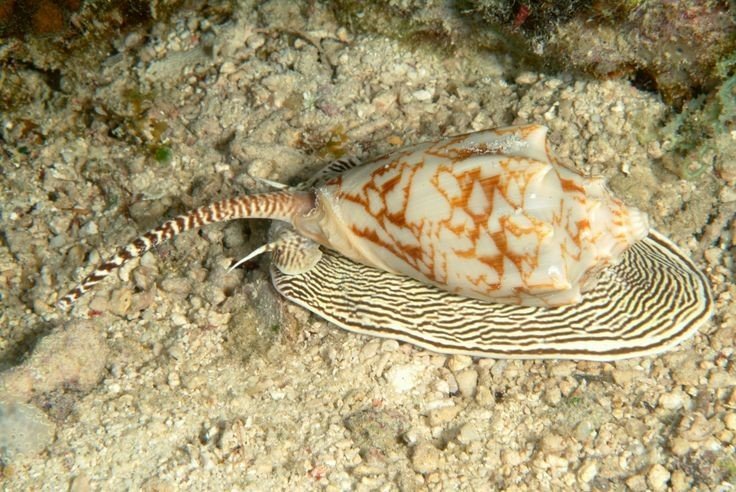
By evaluating the anatomy and functional limits of these structures, we hope to uncover insights into how they evolve and how their design could inspire new forms for robots or medical devices," said Professor Azizi. "When studying movement in animals, we found that latch and muscular sphincter structures like the one found in the cone snail's hydraulically propelled radula are capable of producing movements at remarkable speeds. And Professor Azizi and his colleagues were interested in determining just how fast their harpooning radula could function. catus use their chitinous radula to catch fast moving fish and other marine animals with remarkable speed. While many land snails use their radula, or feeding structure, to munch on plants, members of C. catus have been found to possess some of the quickest movement among the animal kingdom. Most people may not equate snails with speed, but members of the aquatic species C. Published online in Current Biology - Cell Press, the researchers identified the snail's hydraulically propelled feeding structure as the quickest movement among mollusks by an order of magnitude. With the use of ultra-high-speed videography, Ecology and Evolutionary Biology Associate Professor Emanuel Azizi and colleagues from Occidental College Los Angeles have shed light on the hunting mechanism of the cone snail Conus catus. Source: University of California - Irvine This species occurs in the Red Sea, the Indian Ocean off the Aldabra Atoll, Chagos, Madagascar, Mauritius, Tanzania and KwaZuluNatal in the tropical Indo-West Pacific Region (Papua New Guinea, Marquesas, New Caledonia) off Australia (New South Wales, the Northern Territory, Queensland and Western Australia).Ĭone snail's strike is one of the quickest in the animal kingdom

#Cone snail harpoon speed series
In the variety nigropunctatus, the shell is colored as above and encircled by series of chocolate-colored dots. The body whorl is striate, the striae rounded, usually obsolete above, granular below, olive, chestnut-, chocolate- or pink-brown, variously marbled and flecked with white, often faintly white-banded below the middle. The shell is bulbous, with a convex, striate spire. The size of an adult shell varies between 24 mm and 52 mm. They are capable of "stinging" humans, therefore live ones should be handled carefully or not at all. Like all species within the genus Conus, these snails are predatory and venomous. And check a previous article in the Curator’s Corner explaining the formation of cone snail teeth here.Species: Conus catus Hwass in Bruguière, 1792Ĭonus catus, common name the cat cone, is a species of sea snail, a marine gastropod mollusk in the family Conidae, the cone snails and their allies. Read more the work being done at Schulz’s lab here. When contact with the prey is made and pressure overcomes the forces of the latch, the tooth is released, much like a bullet shooting through a gun barrel, delivering venom through the prey’s skin. A protuberance on the tooth base holds the tooth in place, held by a latch inside the proboscis (see attached images). Cat Cones (and probably other fish-hunting species) have a unique mechanism that allows for the high-pressure build-up of venom inside the proboscis. Fish-hunting cone snails use fast-acting toxins (the venom) and a super-fast venom delivery system.

The entire strike happens in less than 100 microseconds (a microsecond is one millionth of a second), with accelerations exceeding 280,000 m/s2 (the metric system unit for acceleration is meters per second square for comparison, a car acceleration is about 3 to 4 m/s2.) Radular teeth of cone snails resemble harpoons, with the hollow shaft acting as a conduit to deliver venom to the prey (see enclosed scanning image of the tooth of Conus catus). Schulz from the Occidental College in Los Angeles and his collaborators have shown that the strike by the radular tooth of the fish-hunting Cat Cone, Conus catus, reaches speeds comparable to those of a bullet being fired from a pistol.

In a paper recently published online in Current Biology, Joseph R. In addition to producing some of the most potent venoms in nature, cone snails are now known to deliver one of the fastest predatory strikes in the animal kingdom.


 0 kommentar(er)
0 kommentar(er)
